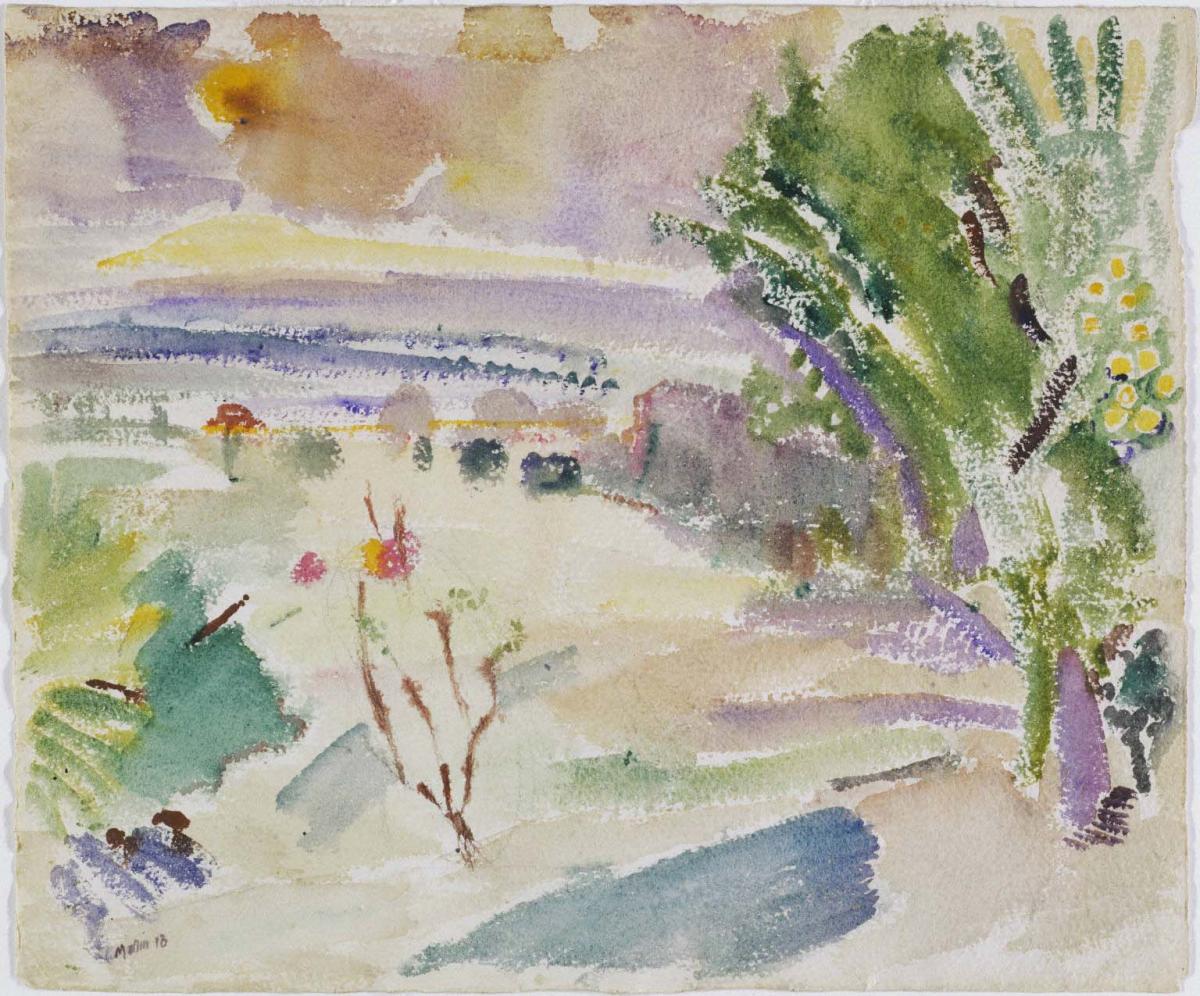Black River Valley
John Marin ( 1913 )

John Marin’s most typical motif throughout his career was the sea; however, when he had the opportunity, Marin greatly enjoyed painting mountains, as he loved their majestic quality, stating that they captured his imagination. During summer 1913, Marin spent the summer along the Black River in Castorland, New York, near the Adirondacks, painting the local landscape of the river valley and surrounding mountains including Black River Valley. His paintings during that summer were full of bright, luminous color, which Marin exaggerated with watercolor paint. Marin typically dated his paintings only by year, not by month or season, but his Castorland paintings are recognizable by a blue, green, and pale yellow summery palette.
Marin spent five years in Europe between 1905 and 1910, and had already been exposed to the work of artists such as Picasso, Braque, and Matisse by 1913, when the Armory Show took place. When painting Black River Valley, Marin drew upon these artists for inspiration, recognizing Matisse’s unique approach to arbitrary color and the Cubists’ structure and technique, though never using these artists methods of prescriptive; Marin’s work stood out for being singularly his own. Marin used his penchant for transparent color, loose and fluid technique, admiration for cubism, and mastery of watercolor paint to create a beautifully abstracted image of the rolling hills and deep river valley, conveying the warmth of a summer day.